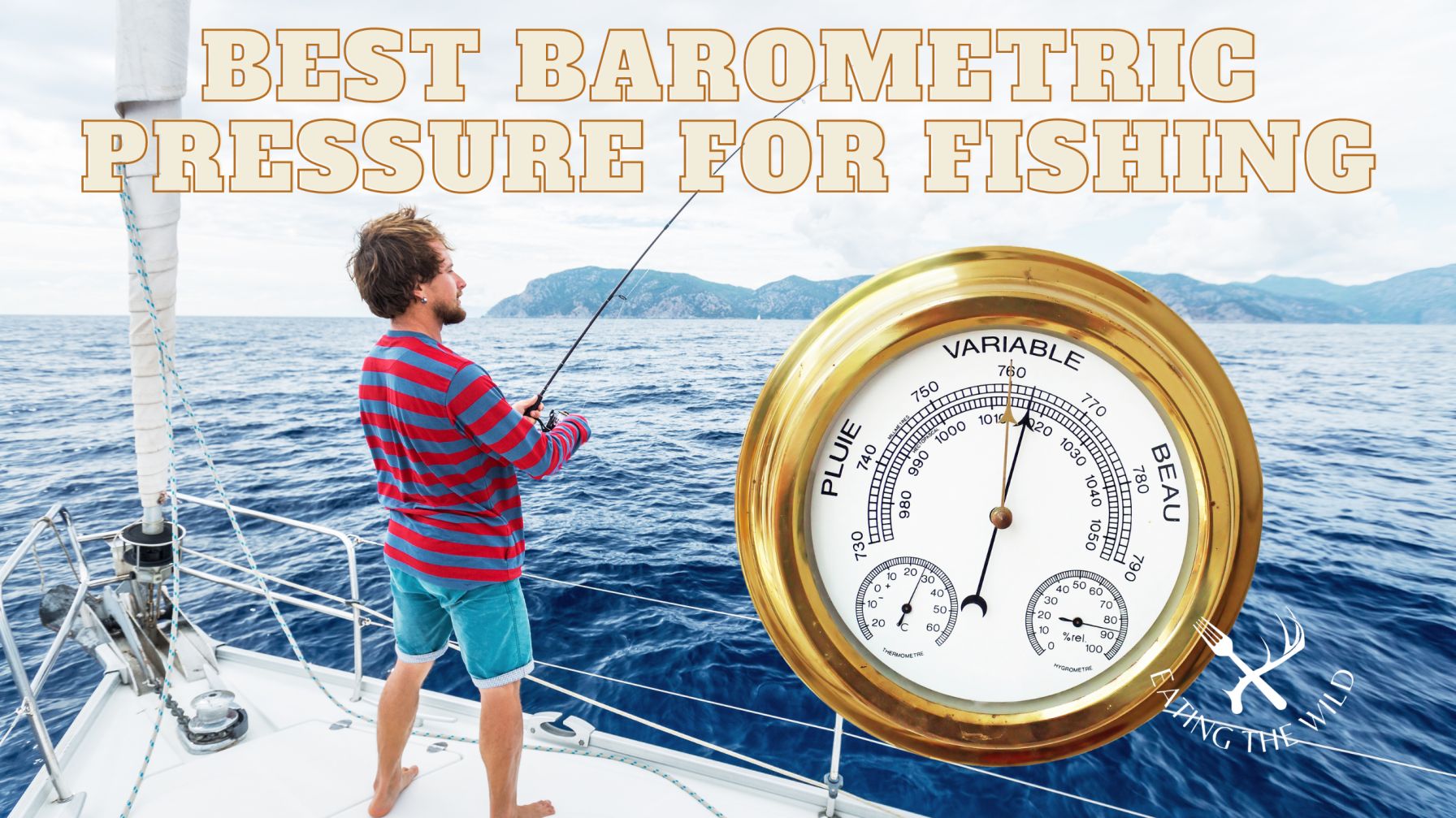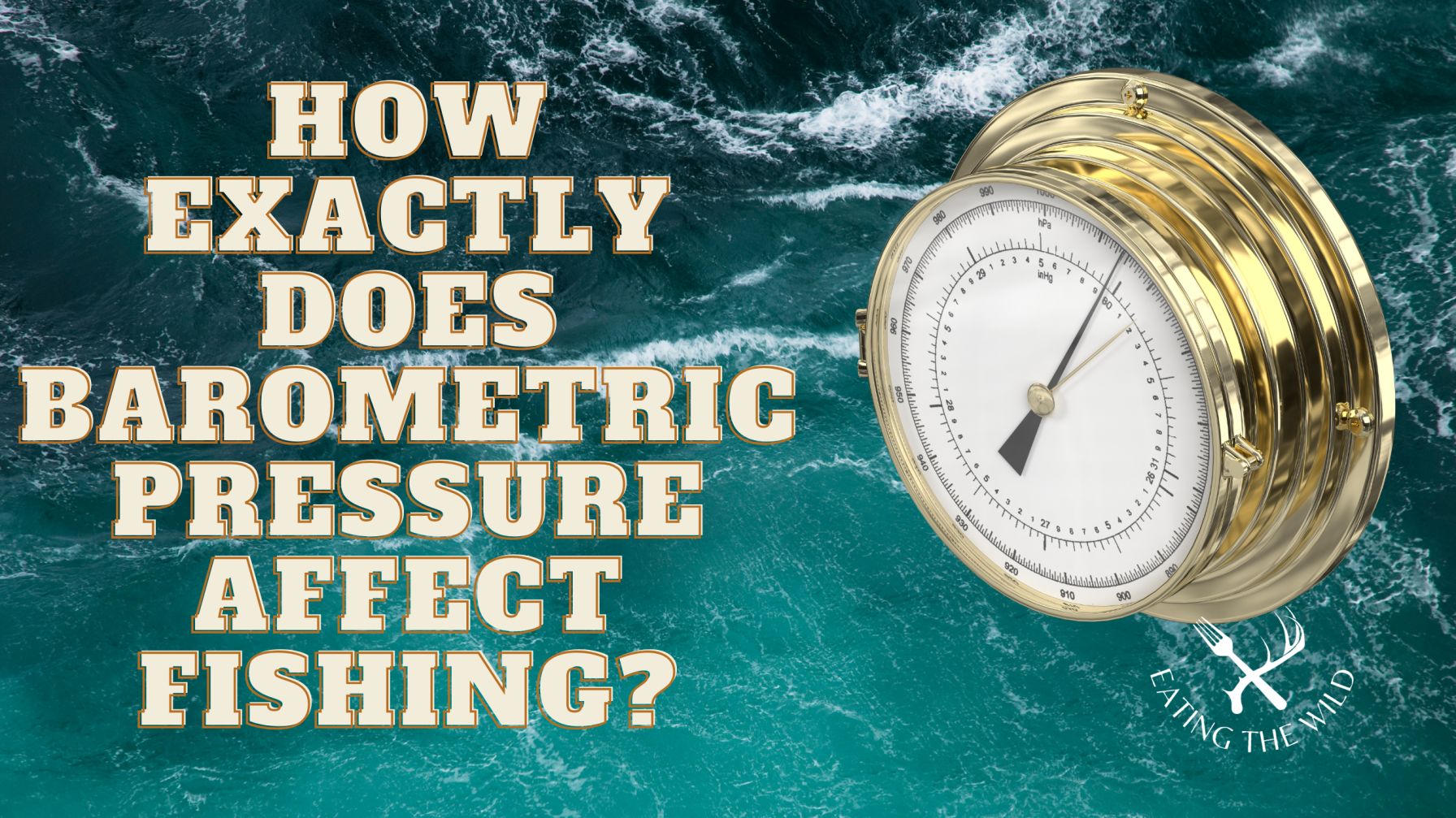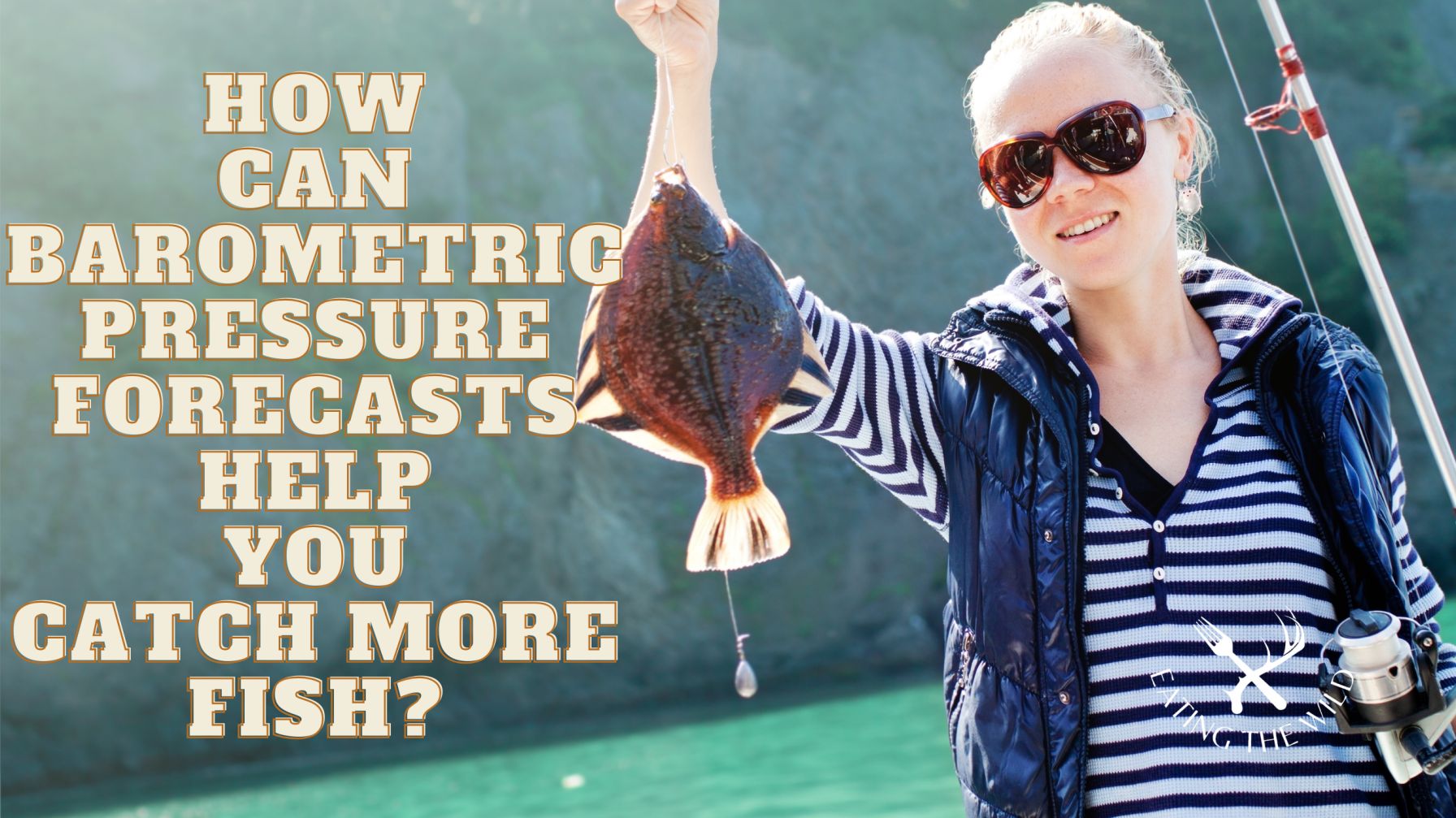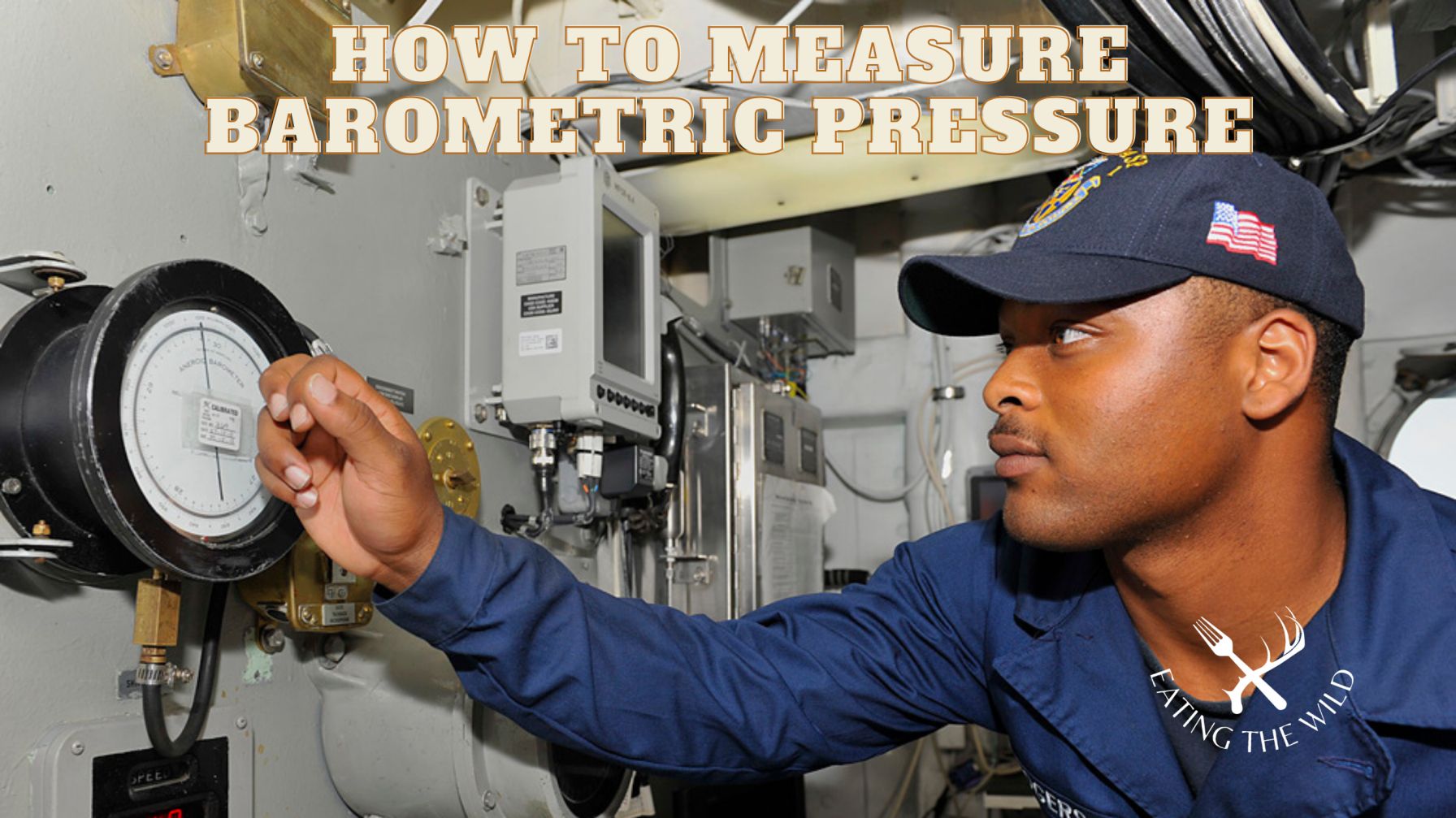
Fishing is not just about rods, reels, and lures. The success of your fishing trip can be heavily affected by something as insignificant as air pressure.
The barometric pressure or the weight of the air in the atmosphere plays an important role in fish behavior. This makes it a key factor for anglers to consider.
In this article, we are going to explain the connection between barometric pressure and fishing, while also recommending the best barometric pressure for fishing.
So, without wasting any further time, let’s get started.
How exactly does barometric pressure affect fishing?

Here’s how barometric pressure affects fishing:
What Is Barometric Pressure?
Barometric pressure is the weight or force of the air surrounding us. It indicates changes in the weather.
A drop in barometric pressure often signals an approaching storm or weather change, while a rise suggests improving weather.
This pressure impacts not just our environment but also the behavior of fish.
How Does Barometric Pressures Affect Humans?
Changes in barometric pressure can significantly impact human health in various ways.
A fall in barometric pressure, which often indicates an approaching storm, can lead to health issues like headaches, changes in blood pressure, and joint pain. Specifically, headaches, including migraines, are often triggered by changes in atmospheric pressure.
The body’s circulatory system, including blood pressure, responds to these changes as well. People with conditions like arthritis may experience increased joint pain when the barometric pressure drops.
Even mood disorders and certain respiratory conditions can be influenced by these changes.
How Does Barometric Pressure Affect Fishing?
Barometric pressure influences fish behavior significantly. Fish are able to sense changes in pressure through their swim bladders.
As the barometric pressure changes, it affects the fish’s buoyancy and, consequently, their behavior. For instance, low-pressure systems, often associated with stormy weather, can make fish more active and likely to feed.
This happens because the lower pressure makes it easier for them to swim and pursue prey.
Conversely, high-pressure systems can lead to clear and calm weather, during which fish might be less active.
What is a Good Barometric Pressure for Fishing?
The ideal barometric pressure for fishing is generally considered to be in the medium range, specifically between 29.80 and 30.20 inches of mercury (Hg).
This range is conducive to active fish behavior, making them easier to catch. High barometric pressure, typically above 30.50 inHg, usually brings clear skies and calm waters, but it can also make fish less active and thus harder to catch.
What Is Normal Barometric Pressure?
Normal barometric pressure at sea level is typically around 1013.25 millibars (mb), which is equivalent to 29.92 inches of mercury (inHg).
This standard measurement indicates fair weather and is a benchmark for predicting weather changes.
Barometric pressure readings generally fall within a normal range of 28.5 to 30.7 inHg (965 to 1,040 millibars), with most human-inhabited areas experiencing pressure close to the normal range (29.8 inHg – 30.2 inHg).
Barometric pressure range
The barometric pressure range is quite broad, reflecting changes in weather conditions. The highest recorded air pressure was 1084 mb in Siberia, while the lowest was 870 mb during a Pacific Ocean typhoon.
These extreme values are rare and typically associated with specific weather phenomena like cold, dry spells, or intense storms.
Medium air pressure
Medium air pressure, which ranges from 29.70 to 30.40 inHg, is often considered the most favorable for fishing.
During periods of medium barometric pressure, the weather is usually fair, providing stable and neutral conditions for fish.
This is an ideal time for anglers to experiment with different lures, baits, and fishing techniques.
What Is the Best Barometric Pressure for Fishing?
The best barometric pressure for fishing varies depending on the conditions and type of fishing you are doing, but generally, the ideal range is between 29.80 and 30.20 inches of mercury (Hg).
This range tends to make the fish more active and easier to catch.
Fishing in High Pressure:
When the barometric pressure is high (above 30.50 inHg), the weather is typically clear, and waters are calm, which can make it easier to spot fish in shallow water.
However, under high pressure, fish may become more sluggish due to decreased oxygen levels in the water. Therefore, it’s advisable to fish slowly in deeper water or near cover, and to consider factors like moon phase, tides, and time of day.
Fishing in Low Pressure:
Low barometric pressure (below 29.60 inHg), usually accompanied by cloudy or rainy weather, can also be beneficial for fishing.
The increased turbulence during these conditions stirs up food sources like insects and baitfish, making them more accessible to larger gamefish.
In low-pressure scenarios, it’s effective to slow down your fishing approach, use baits that emit strong scents or produce vibrations, and pay attention to changes in water clarity.
How Can Barometric Pressure Forecasts Help You Catch More Fish?

Barometric pressure forecasts can significantly aid anglers in planning successful fishing trips. Here’s how understanding and using these forecasts can help you catch more fish:
Predicting Fish Behavior:
Fish are sensitive to changes in barometric pressure, which can affect their feeding habits. A dropping barometric pressure often indicates an approaching weather system, which can lead to increased fish activity as they feed aggressively before the arrival of bad weather.
Conversely, rising pressure usually signifies clearing weather, during which fish might become less active and more cautious.
Choosing the Right Time:
By monitoring barometric pressure trends, anglers can choose the most opportune times to fish.
For example, fishing just before a storm (as the barometric pressure is falling) can be particularly productive. After a storm passes and the pressure begins to rise again, fish may take some time to resume normal feeding patterns.
Selecting Suitable Fishing Techniques and Baits:
Different barometric conditions may call for different fishing strategies. In low-pressure conditions, slower and deeper fishing techniques and baits that emit strong scents or vibrations can be more effective.
In high-pressure scenarios, fishing in deeper waters or near covers, where fish tend to hide, might yield better results.
Barometric Pressure Chart for Fishing
| Barometric Pressure (inHg) | Weather Condition | Fishing Activity | Tips and Techniques |
| 30.50+ | High Pressure | Medium to Slow | Fish slowly in deeper water or near cover. |
| 29.70 – 30.40 | Medium Pressure | Normal | Ideal for testing lures, baits, and techniques. Look for underwater structures and areas with cover. |
| Below 29.60 | Low Pressure | Slow | Slow fishing techniques in deeper water or near cover. Use bait with strong scents or vibrations. |
| Rising Pressure | Improving Weather | Slightly Active | Similar to high pressure, fish in deeper water or near cover with a slower approach. |
| Stable Pressure | Fair Weather | Average | A good time to test different gears or baits. |
| Falling Pressure | Degrading Weather | Best | Fish are likely to feed aggressively. Use louder and more aggressive presentations. |
| Very Low (28.8 and below) | Severe Weather | High Activity | Use topwater lures, poppers, chuggers, and loud presentations. |
| Low (28-29.4) | Post-Storm | Increased Activity | Shallow fishing with power techniques like crankbaits. |
| Normal (29.5-30) | Post-Storm Few Days | Moderate Activity | Use live bait, minnows, soft plastics. Varying depths. |
| High (30.1-30.8) | Stable High Pressure | Decreased Activity | Fish hold to deeper waters and structure, use finesse techniques. |
| Very High (30.9 and higher) | Stable/Very High Pressure | Inactive | Bass very deep or holding to shallow cover, require patience or skipping fishing. |
How to Measure Barometric Pressure

Barometric pressure is measured using a barometer, an instrument that measures the atmospheric pressure.
This pressure is often recorded in inches of mercury (inHg) or millibars (mb). There are several types of barometers:
Mercury Barometers:
Traditional devices that use a column of mercury to measure air pressure.
Aneroid Barometers:
More common today, these use a small, flexible metal box called an aneroid cell. The cell contracts or expands with pressure changes.
Digital Barometers:
Found in modern devices like smartphones and weather stations, they provide digital readings of atmospheric pressure.
Best Fishing Barometers
For fishing, specialized barometers or fishing forecast apps can be particularly useful.
These tools are designed to help anglers predict fish behavior based on pressure changes.
BassForecast Fishing Forecast App:
The BassForecast App is specifically designed with anglers in mind. It provides comprehensive fishing forecasts by analyzing barometric pressure changes along with other relevant weather conditions.
This app is particularly useful for predicting the best fishing times, enabling anglers to plan their trips more effectively.
AcuRite Iris (5-in-1) Weather Station:
For a more holistic approach to weather tracking, the AcuRite Iris (5-in-1) Weather Station stands out. This advanced home weather station includes a barometer among its suite of sensors, offering real-time weather data.
For fishing enthusiasts, having access to such immediate and accurate atmospheric information is invaluable, as it helps in making informed decisions about when and where to fish, based on the current weather conditions.
Trac Outdoor Fishing Barometer:
A portable device specifically designed for anglers, providing easy-to-read barometric pressure readings.
Adjust Your Fishing Techniques
Understanding and adapting to different barometric pressure conditions can significantly impact your fishing success.
Extreme High-Pressure Conditions
- Behavior: Fish tend to become less active and may go deeper in water.
- Techniques: Use finesse fishing techniques. Slow down your presentations and focus on deeper waters or areas with cover.
- Lures: Opt for smaller, subtle lures like jigs or soft-plastic baits.
Extreme Low-Pressure Conditions
- Behavior: Fish may become more active, especially before a storm.
- Techniques: Use aggressive fishing techniques. Fish are likely to strike more rapidly at lures.
- Lures: Use topwater lures, spinners, or crankbaits for more active responses.
Know – Adapt – Catch More with BassForecast
Using apps like BassForecast can guide your fishing strategy. It analyzes weather patterns, including barometric pressure, to forecast optimal fishing conditions.
By following its recommendations and adapting your techniques accordingly, you can increase your chances of a successful catch.
Final Thoughts on Barometric Pressure and Fishing
Understanding barometric pressure and its impact on fishing enhances your chances of a successful outing. By monitoring pressure changes and adapting your techniques accordingly, you can make the most of different fishing conditions. Tools like specialized barometers and fishing forecast apps are invaluable for planning your fishing trips.
FAQs
How to Identify Feeding Times Based on Air Pressure
Fish behavior changes with varying barometric pressures. Generally:
- Rising Pressure: Fish may feed more actively after a period of low pressure.
- High Pressure: Fish activity might decrease, leading to more subtle feeding patterns.
- Falling Pressure: Often the best fishing times, as fish tend to feed aggressively before a storm or weather change.
- Low Pressure: Fish may become less active, but can still be caught using appropriate techniques.
What Is The Best Barometric Pressure For Bass Fishing?
The best barometric pressure for bass fishing is typically during falling barometric pressure, especially just before a storm when the pressure starts to drop.
During this time, bass are known to feed more aggressively. However, bass fishing can still be productive in various pressure conditions with the right strategies.
Is there an app for barometric pressure?
Yes, there are several apps available for monitoring barometric pressure. Some notable ones include BassForecast, FishWeather, and Weather Underground.
